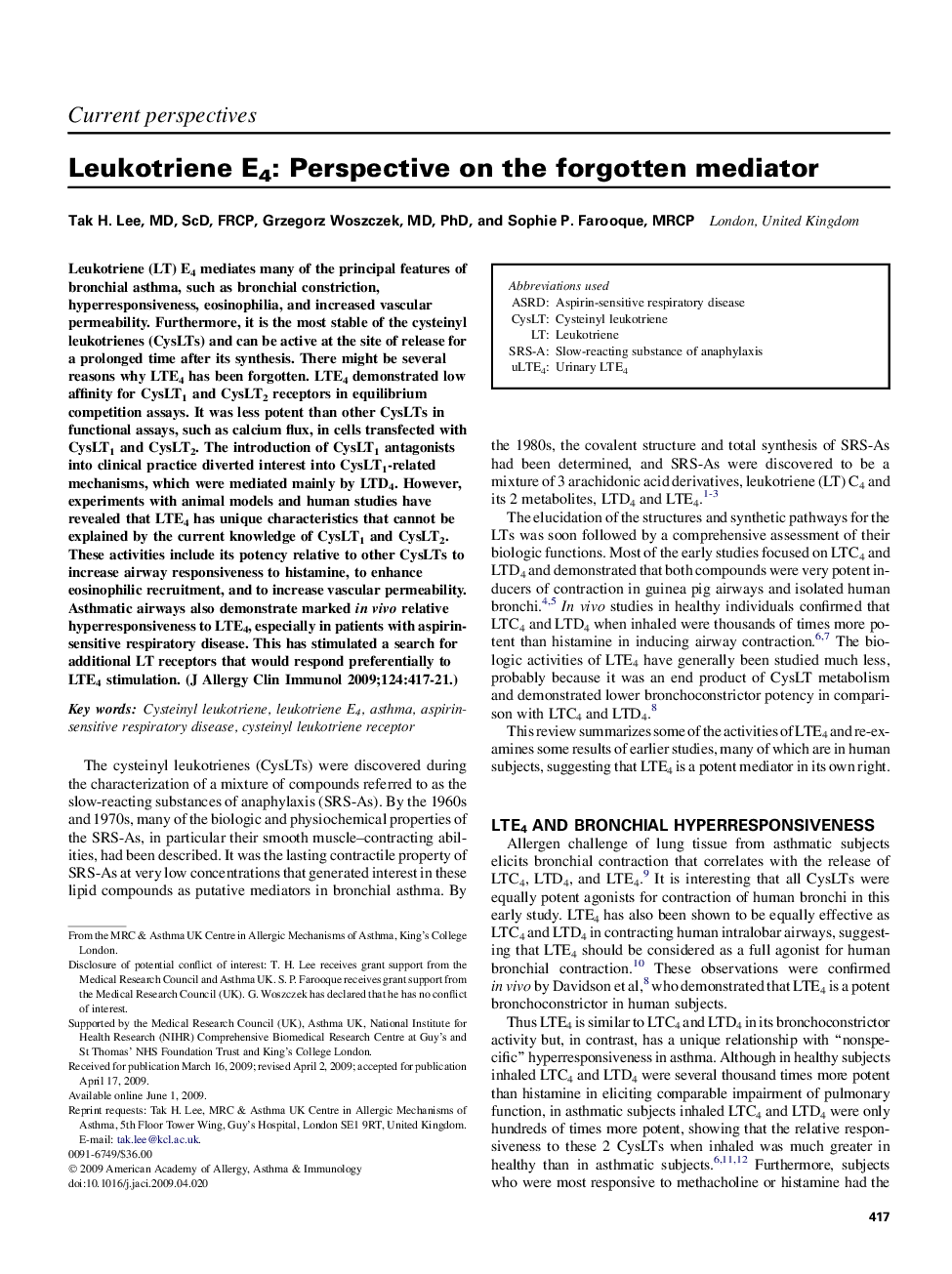| Article ID | Journal | Published Year | Pages | File Type |
|---|---|---|---|---|
| 3200919 | Journal of Allergy and Clinical Immunology | 2009 | 5 Pages |
Abstract
Leukotriene (LT) E4 mediates many of the principal features of bronchial asthma, such as bronchial constriction, hyperresponsiveness, eosinophilia, and increased vascular permeability. Furthermore, it is the most stable of the cysteinyl leukotrienes (CysLTs) and can be active at the site of release for a prolonged time after its synthesis. There might be several reasons why LTE4 has been forgotten. LTE4 demonstrated low affinity for CysLT1 and CysLT2 receptors in equilibrium competition assays. It was less potent than other CysLTs in functional assays, such as calcium flux, in cells transfected with CysLT1 and CysLT2. The introduction of CysLT1 antagonists into clinical practice diverted interest into CysLT1-related mechanisms, which were mediated mainly by LTD4. However, experiments with animal models and human studies have revealed that LTE4 has unique characteristics that cannot be explained by the current knowledge of CysLT1 and CysLT2. These activities include its potency relative to other CysLTs to increase airway responsiveness to histamine, to enhance eosinophilic recruitment, and to increase vascular permeability. Asthmatic airways also demonstrate marked in vivo relative hyperresponsiveness to LTE4, especially in patients with aspirin-sensitive respiratory disease. This has stimulated a search for additional LT receptors that would respond preferentially to LTE4 stimulation.
Keywords
Related Topics
Life Sciences
Immunology and Microbiology
Immunology
Authors
Tak H. MD, ScD, FRCP, Grzegorz MD, PhD, Sophie P. MRCP,
